
The variation of internal energy U and density d of one mole of an ideal monatomic gas is shown inn cyclic process ABCA. The curve from A to B is a rectangular hyperbola. Select correct alternatives.
The work done by gas in process AB is 2U0
The work done by gas in process BC is −3U02ln2
The molar heat capacity of gas for process CA is 3R2
The molar heat capacity of gas for process AB is 3R2
The correct Answer is:A, C
PM=dRT
in ABd∝1T therefore it is an isoberic process.
WAR=nRΔT=R(4T0−T0)
U0=32RT0
WAB=2U0
In process BC (isothermal)
WBC=−nR(4T0)ln(4d0d0)=−8RT0ln2
=−163U0ln2
Process CA is isochoric while AB is isobaric
Topper's Solved these Questions
- TEST PAPERSBook:RESONANCEChapter:TEST PAPERSExercise:PT-01
Explore 30 Videos
- TEST PAPERSBook:RESONANCEChapter:TEST PAPERSExercise:Pt-02
Explore 30 Videos
- TEST PAPERSBook:RESONANCEChapter:TEST PAPERSExercise:PART - II PHYSICS
Explore 107 Videos
- SIMPLE HARMONIC MOTION Book:RESONANCEChapter:SIMPLE HARMONIC MOTION Exercise:Advanced Level Problems
Explore 13 Videos
- TEST SERIESBook:RESONANCEChapter:TEST SERIESExercise:PHYSICS
Explore 127 Videos
Similar Questions
The graph shows variation of internal energy U with density ρ of one mole of an ideal monatomic gas. The process AB is a part of rectangular hyperbola. Find the work done (in J ) in the process.
'(##CEN_KSR_PHY_JEE_C15_E01_024_Q14##)'
View SolutionFigure shows the variation of the internal energy U with the density ρ of an ideal monoatomic gas for a therodynamic process AB. Process AB is a part of arectangular hyperbola. Find the work done (in joule) by gas in process AB.
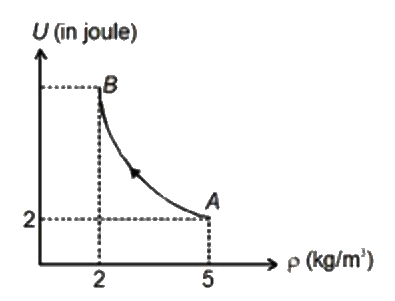
View Solution
Knowledge Check
Figure shows the variations of the internal energy U With density ρ one mole an ideal monatomic gas for thermodynamic cycle ABCA . Here process AB is a part of rectangular hyperbola,-
_S01_092_Q01.png) Aprocess AB is isothermal & net work in cycle is done by gas.Bprocess AB is isobaric & net work in cycle is done by gas.Cprocess AB is isobaric & net work in cycle is done on the gas.Dprocess AB is adiabatic & net work in cycle is done by gas.
Aprocess AB is isothermal & net work in cycle is done by gas.Bprocess AB is isobaric & net work in cycle is done by gas.Cprocess AB is isobaric & net work in cycle is done on the gas.Dprocess AB is adiabatic & net work in cycle is done by gas.One mole of an ideal monoatomatic gas is taken round the cylic process ABCA as shown Then
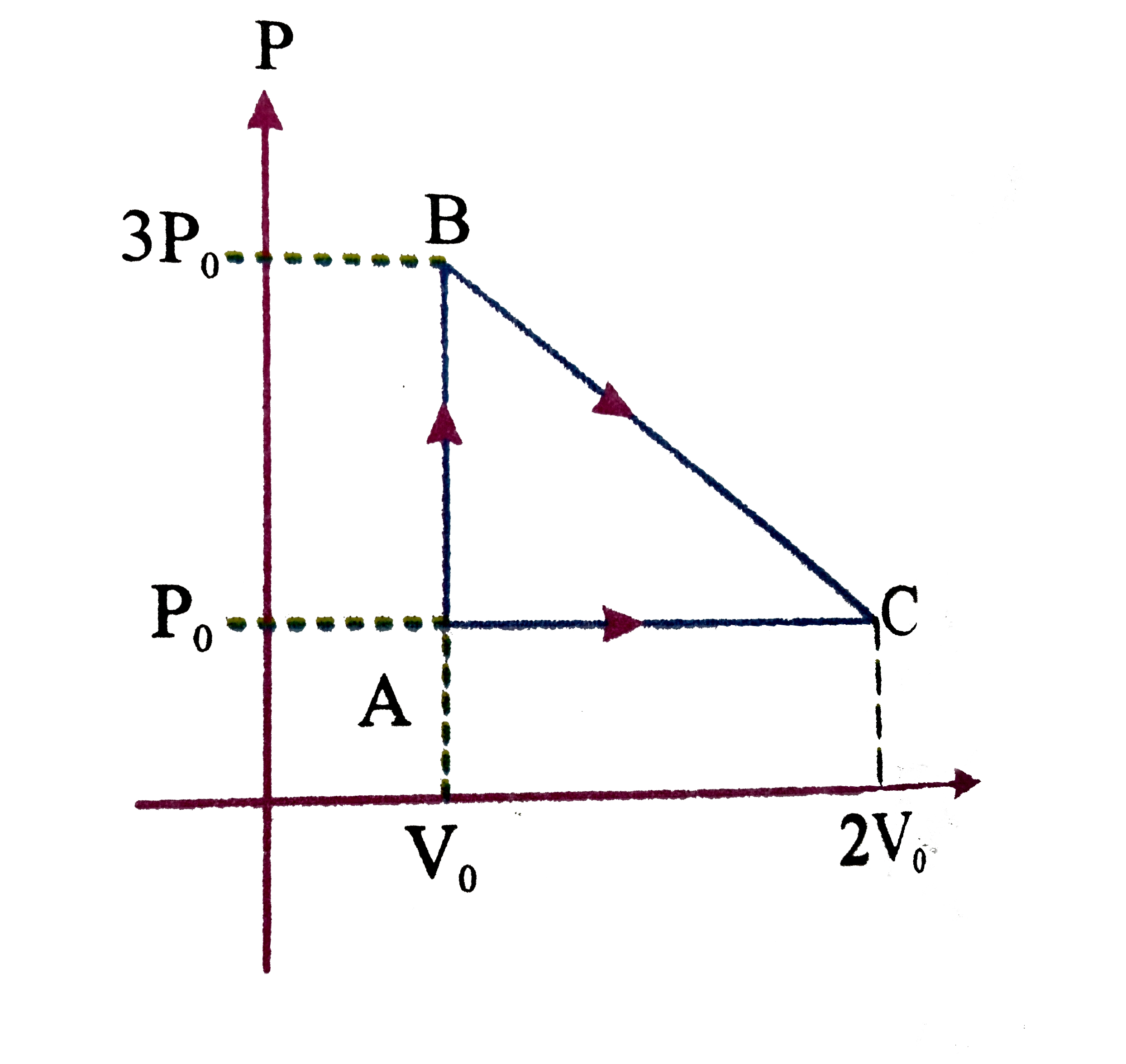 AWork done by the gas P0V0BHeat rejected in the process CA is 5P0V02 and absorbed in the process AB is 3P0V0CHeat absorbed in the process BC is P0V02D258P0V0R is the maximu temperature attained by the gas during the cycle
AWork done by the gas P0V0BHeat rejected in the process CA is 5P0V02 and absorbed in the process AB is 3P0V0CHeat absorbed in the process BC is P0V02D258P0V0R is the maximu temperature attained by the gas during the cycleOne mole of an ideal mono-atomic gas is taken round cyclic process ABCD as shown in figure below. Calculate
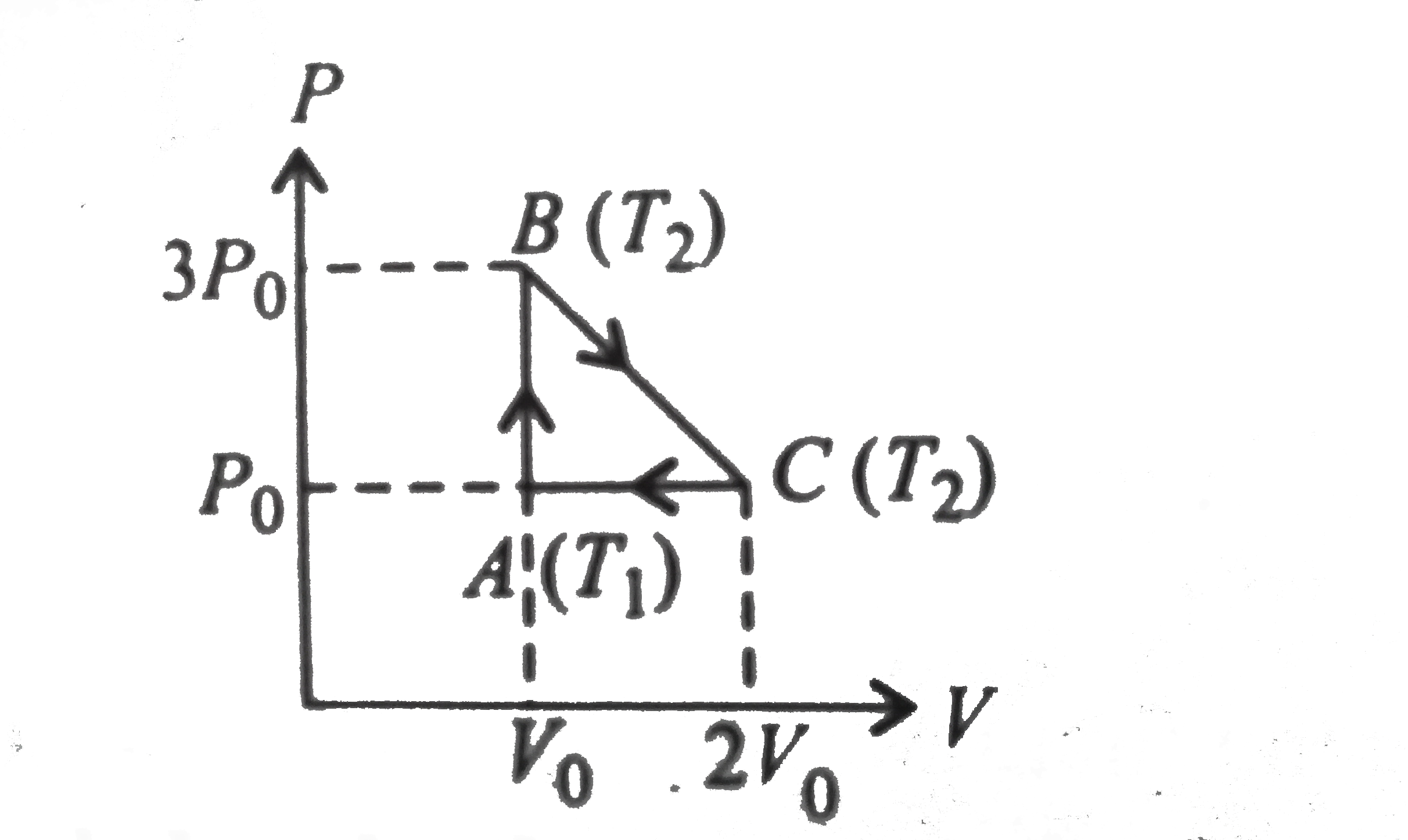 AThe work done by the gas.BThe heat rejected by the gas in the path CAand the heat absorbed by the gas in the path AB.CThe net heat absorbed by the gas in the path BC.DThe maixmum temperature attained by the gas during the cycle.
AThe work done by the gas.BThe heat rejected by the gas in the path CAand the heat absorbed by the gas in the path AB.CThe net heat absorbed by the gas in the path BC.DThe maixmum temperature attained by the gas during the cycle.
shows the variation in the internal energy U with the volume V of 2.0 mol of an ideal gas in a cyclic process abcda. The temperatures of the gas at b and c are 500 K and 300 K respectively. Calculate the heat absorbed by the gas during the process.

View SolutionA thermodynamic process of one mole ideal monoatomic gas is shown in figure. The efficiency of cyclic process ABCA will be
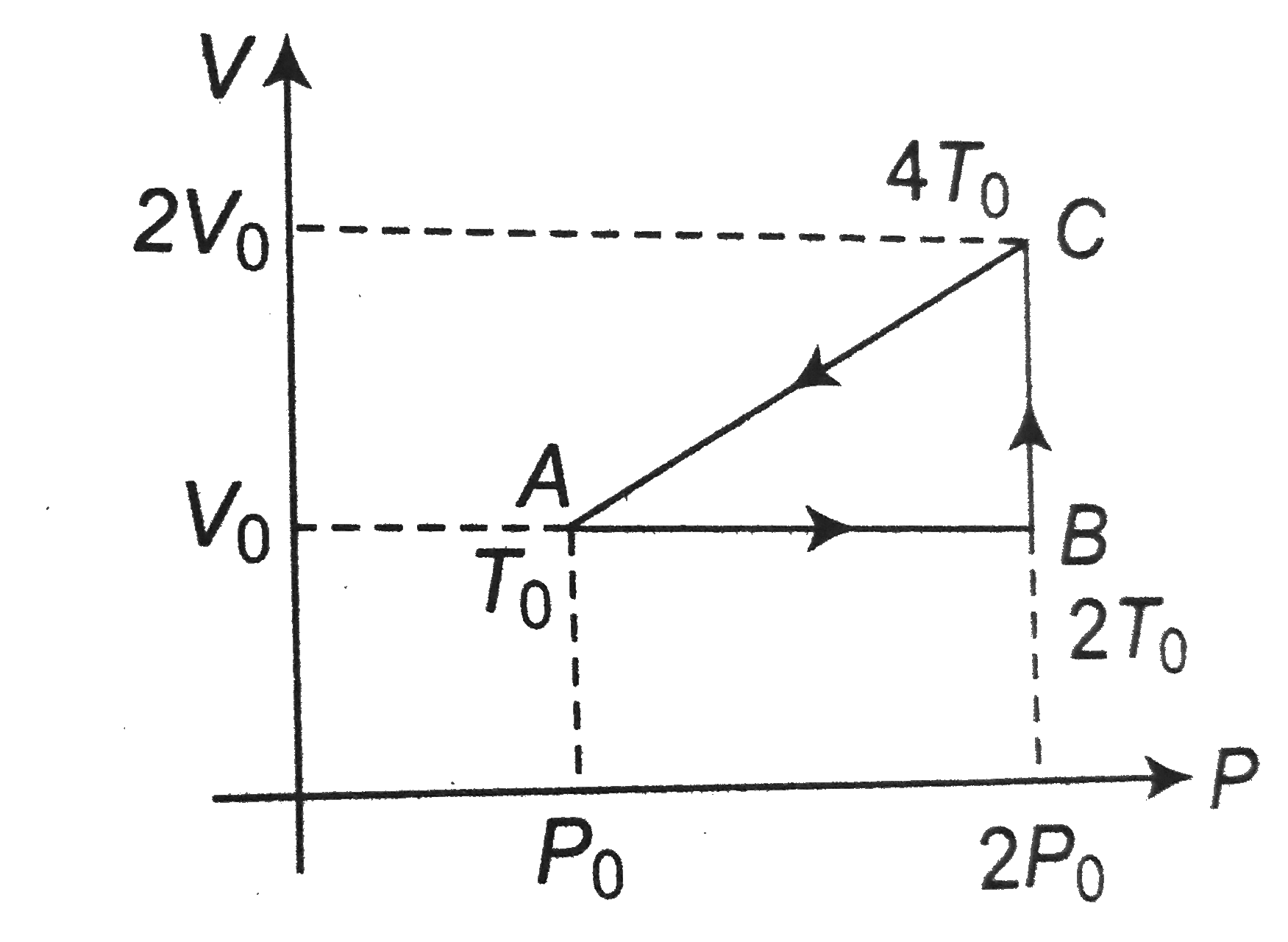
View SolutionOne mole of an ideal monoatomic gas is taken through a cyclic process as shown. Choose the correct option(s).
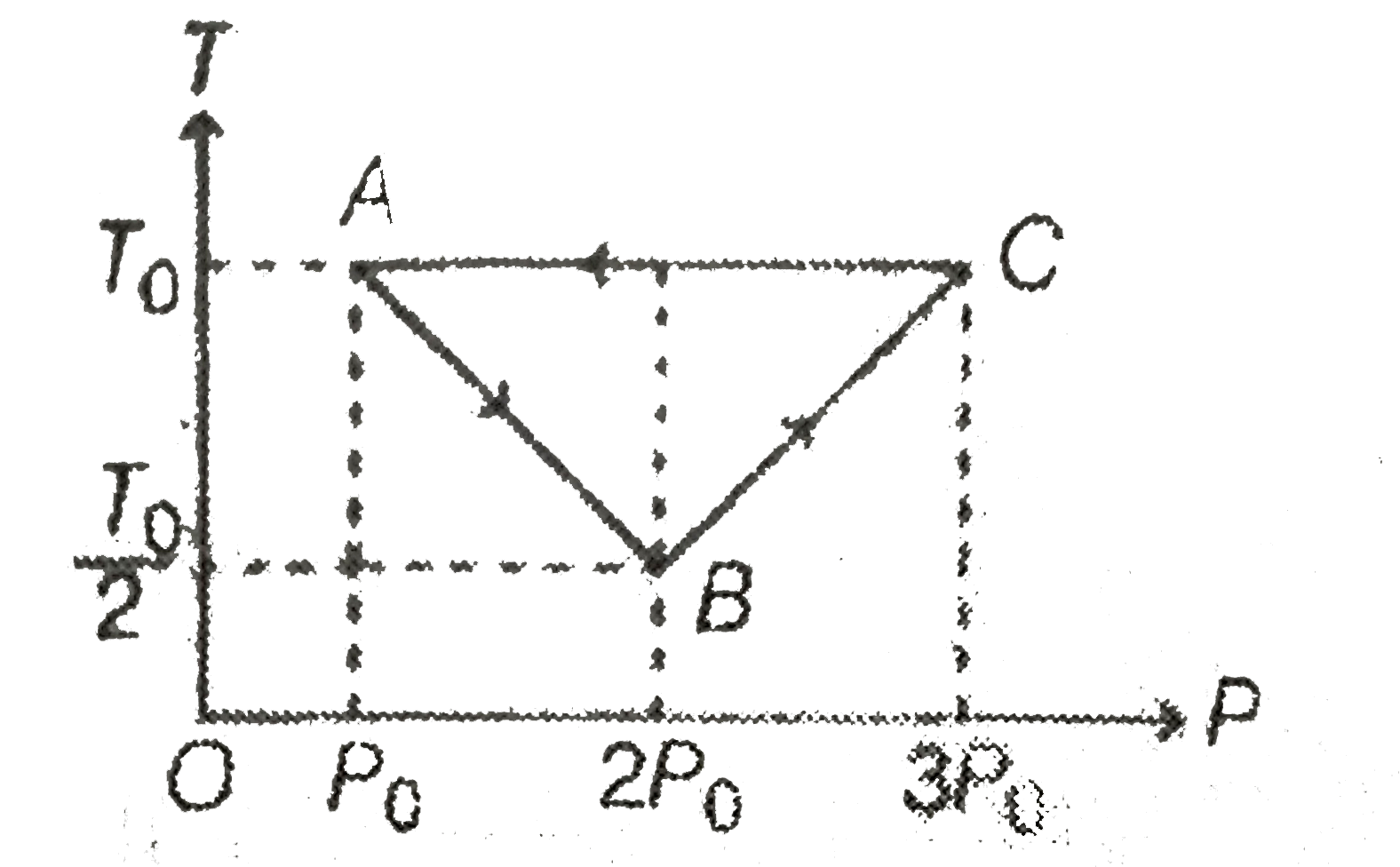
View SolutionA thermodynamic process of one mole ideal monatomic gas 2.is shown in figure. The 4 efficiency of cyclic process ABCA will be
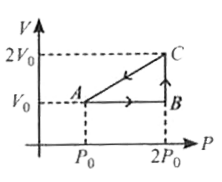
View Solutionp-T diagram of one mole of an ideal monatomic gas is shown. Processes AB and CD are adiabatic. Work done in the complete cycle is

View Solution